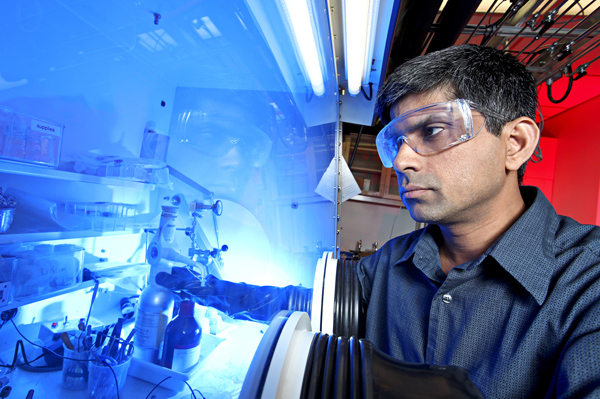ORNL Stores Four Times the Energy with a Battery Breakthrough
In recent years, since the amount of energy consumed on our planet has risen drastically, there have been efforts to make energy efficiency a priority. Vehicles of all types are starting to move away from using fossil fuels and towards direct electrical energy, and increasingly buildings are being constructed with wind and solar power options in mind.
 But cars and buildings aren't the only things that stand to benefit from energy efficiency; batteries too need to be able to store large quantities of energy in a way that is safe and environmentally friendly.
But cars and buildings aren't the only things that stand to benefit from energy efficiency; batteries too need to be able to store large quantities of energy in a way that is safe and environmentally friendly.
Scientist Chengdu Liang and his team at Oak Ridge National Laboratory (ORNL) have been working to solve this exact problem since 2007 and now they say that they’ve designed and successfully tested a new battery that can store 4 times the energy as conventional lithium-ion versions.
Liang stated, “Our battery is the next generation of energy storage. The materials we developed will be the foundation for batteries for the next 30 to 50 years. It will make a big impact.”
He said that the first thing that he and his team did to improve storage capacity was to look at conventional battery fabrication approaches. These approaches use liquid electrolytes to conduct electrons between cathodes and anodes.
Even in doing so, they were still unable to find a way to increase energy storage by using liquids. They then began researching all-solid batteries using lithium and sulfur-rich compounds. This approach had been explored before, but historically did not meet with success. This time, however, Liang and his team designed new molecules that grew crystal structures: a new approach that allowed better conductivity and energy storage throughout the battery.
“Our approach is a complete change from the current battery concept of two electrodes joined by a liquid electrolyte, which has been used over the last 150 to 200 years,” Liang said.
He and his team showed that their battery could maintain a capacity of 1,200 milliamp-hours (mAh) per gram through 300 charge-discharge cycles at 140 degrees Fahrenheit. Meanwhile, traditional batteries have capacities between only 140-170 mAh per gram.
Not only does their battery store more energy than traditional lithium-ion based batteries, but it is much safer as well. Lithium-ion batteries are filled with flammable liquid electrolytes, which can catch fire and endanger lives. By using solid sulfur and lithium the scientists have developed a battery that is indeed much safer.
But the battery has not been perfected yet. So far, it has only been experimentally demonstrated in their lab.
“We solved the science problem,” Liang says. “We used fundamental research to understand a scientific phenomenon, identified the problem and then created the right material to solve that problem. Now we invite engineers to play on this new playground.”
Full story at Txchnologist.










